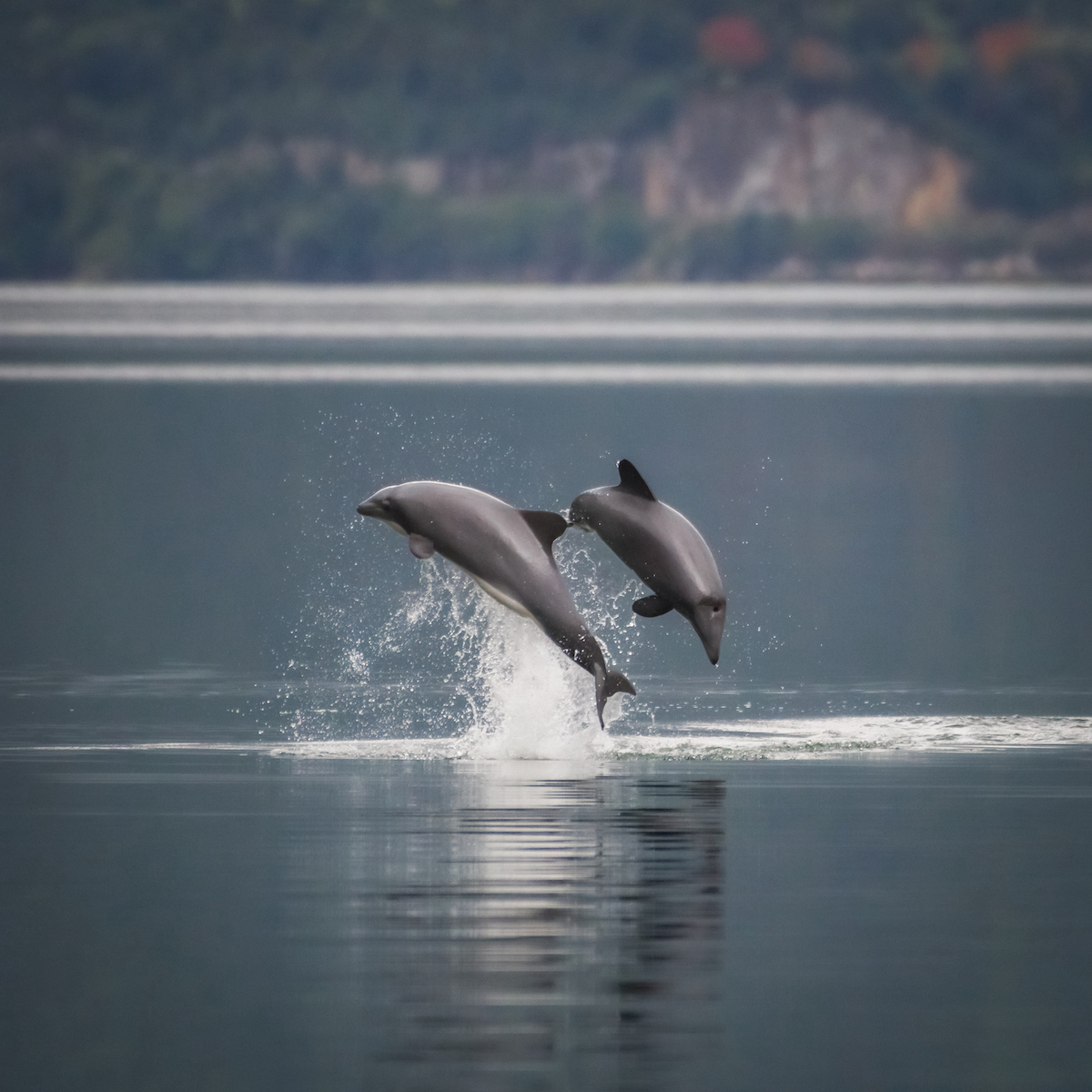 Photo: Gaspar Ramiěrez
Photo: Gaspar Ramiěrez
By Victoria Traxler
For the first time, aquatic researchers have an estimate of the dwindling Chilean dolphin population.
Today, the Chilean dolphin (Cephalorhynchus eutropia) is primarily found in the waters off northern Chilean Patagonia following decades of overfishing and is categorized as "vulnerable" by Chile and “near threatened” on the International Union for the Conservation of Nature (IUCN) Red List of Threatened Species.
No more than two meters in length, the Chilean dolphin has a unique gray and black color with a white underbelly. Endemic to Chile, it is found from Valparaiso to Tierra del Fuego at the southernmost tip of the South American continent. It prefers these unique high tidal ranges, and the frigid waters of fjords bays and estuaries, and at times enters river basins too.
Now, researchers with the High Latitude Marine Ecosystem Dynamics Research Center (Centro IDEAL) of the Universidad Austral de Chile estimate there are only about 2000 of these dolphins left, according to a recent study published in Aquatic Conservation.
“This number is much lower compared to other species of the same genus, emphasizing the vulnerability of this species,” said Dr. Luis Bedriñana-Romano, an expert in marine mammal biology.
The study offers the first concrete look at these important animals critical to the marine habitat of Chilean waters.
Bedriñana-Romano has been investigating the Chilean dolphin population and distributions since 2009. The recent study has helped pioneer discoveries on the species. The research found that the majority of dolphins that exist today are concentrated near the northern coast of Chiloé Island.
However, unlike some other species of dolphin, the Chilean dolphin travels long distances in search of food, making it particularly vulnerable to habitat degradation. Its close proximity to many places impacted by human activity such as shipping, fishing, salmon farms, and pollution has led experts to be concerned over the future of this iconic animal.
“However, to know if this phenomenon is effectively affecting the viability of Chilean dolphin populations, we need monitoring programs over time, something that unfortunately we do not have in Chile," Bedriñana-Romano said.
Given the threat of anthropogenic impacts and continued plans for further growth and development of the region, the researchers say they hope their study will better inform future management plans for marine protected areas.

